“I’m the luckiest illustrator in history”: Interview with Michael Hirshon | Wisconsin, U.S.
Join EAS contributor Vivien Ahrens for an interview with Michael Hirshon, a well established young artist whose career path has been as colorful as his artworks!
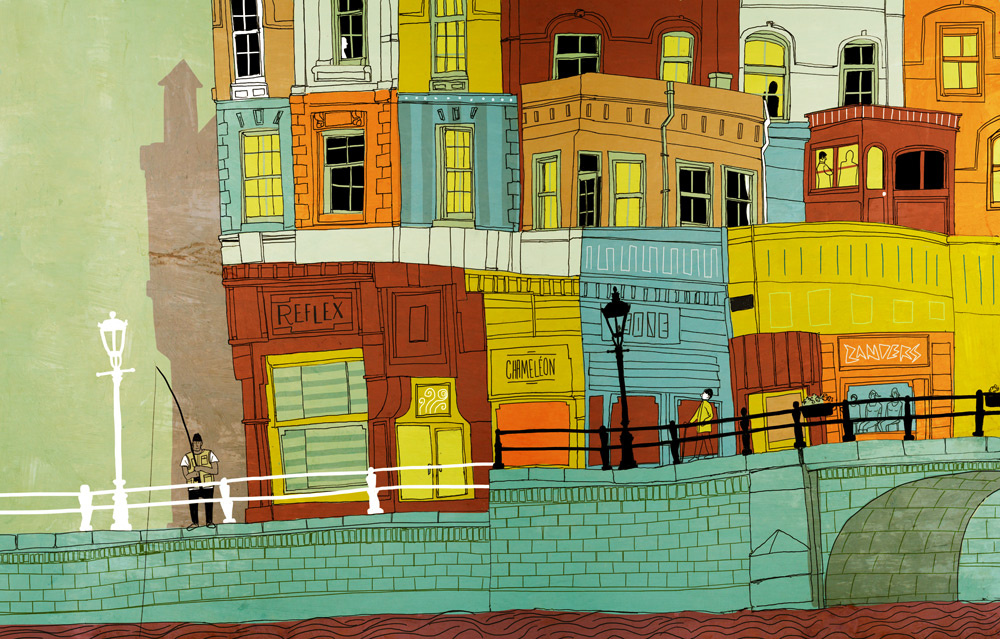
I giggle when Mike says this. It’s rare for someone to acknowledge their good fortune in such a matter-of-fact fashion. Michael is not showing off, just quietly observing. In his atelier office in Madison, Wisconsin, this new EAS member tells me about the twists and turns of his career. Since drawing dinosaurs and robots as a child, he has developed his own style of digitally layering line drawings, colors and textures. Michael combines sketching on location with photos from his “library of textures” – a collection of photographed walls, mosaics, canvases and murals from around the world.
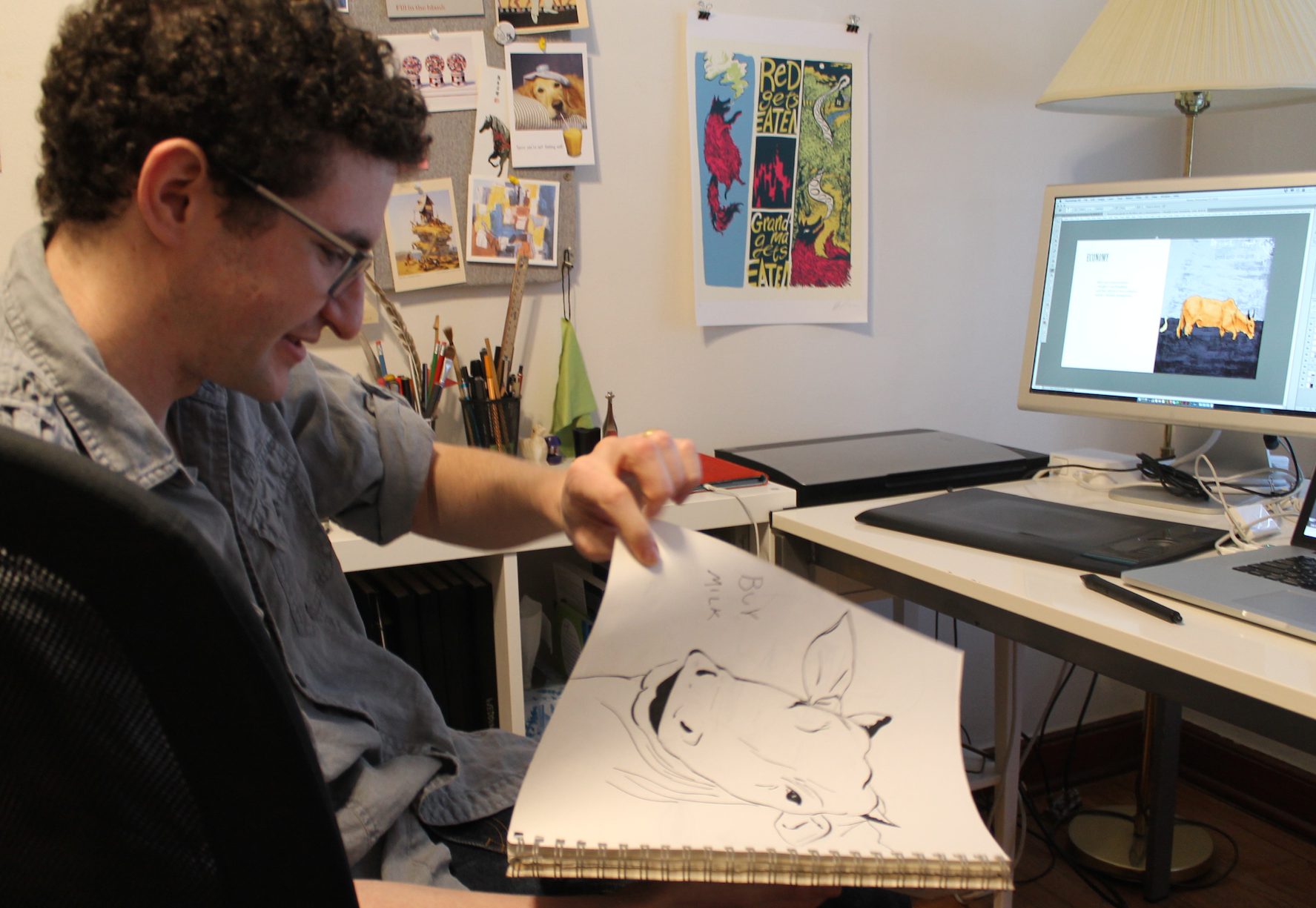
How did you become an illustrator, Michael?
It was kind of an accident. When I was in high school, I wanted to become a creative writer. I applied to schools, thinking that I was going to do that. As soon as I enrolled, I found out that the school didn't have a creative writing major. They told me they did, but the counselor was referring to the Master’s program. They did have a great art school though. So, as I had always loved art and drawing, I decided to do that. After basic arts classes, in junior year I entered the intensive communication arts program, focused on graphic design and illustration, and ended up liking it a lot.
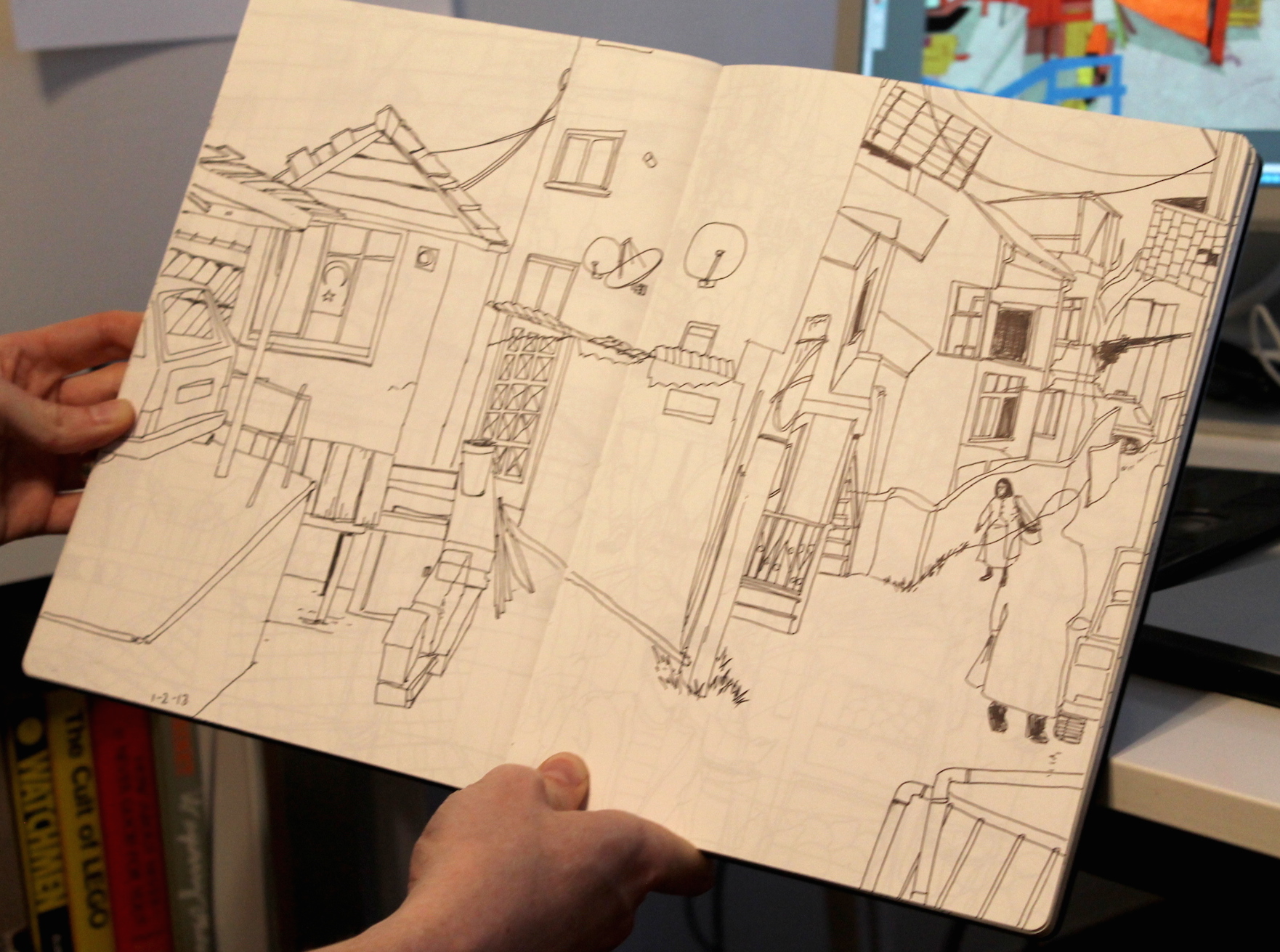
What inspires your work?
Drawing on location. As a kid, we moved every 3 or 4 years. Virginia, Ohio, Pennsylvania, Massachusetts. I always complained to my parents that they moved too much, but then as an adult I continued moving: Missouri, New York, Amsterdam for a year. Drawing on location helps me process and understand where I am. As a child, before I was really drawing, each place was just a different place. Now it helps me see how each place has a different look to it.
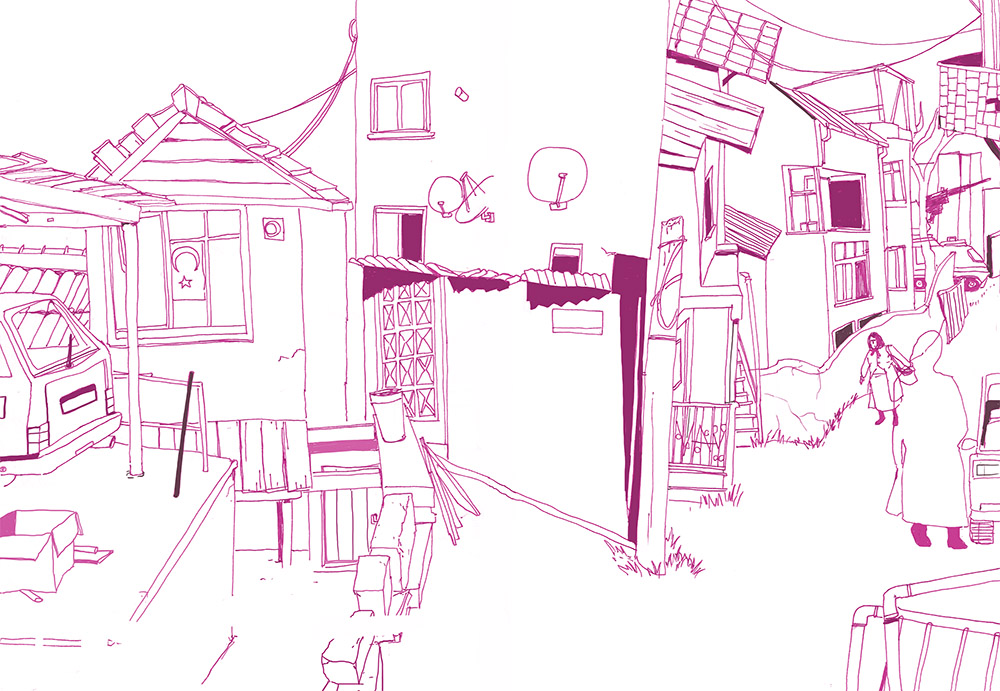
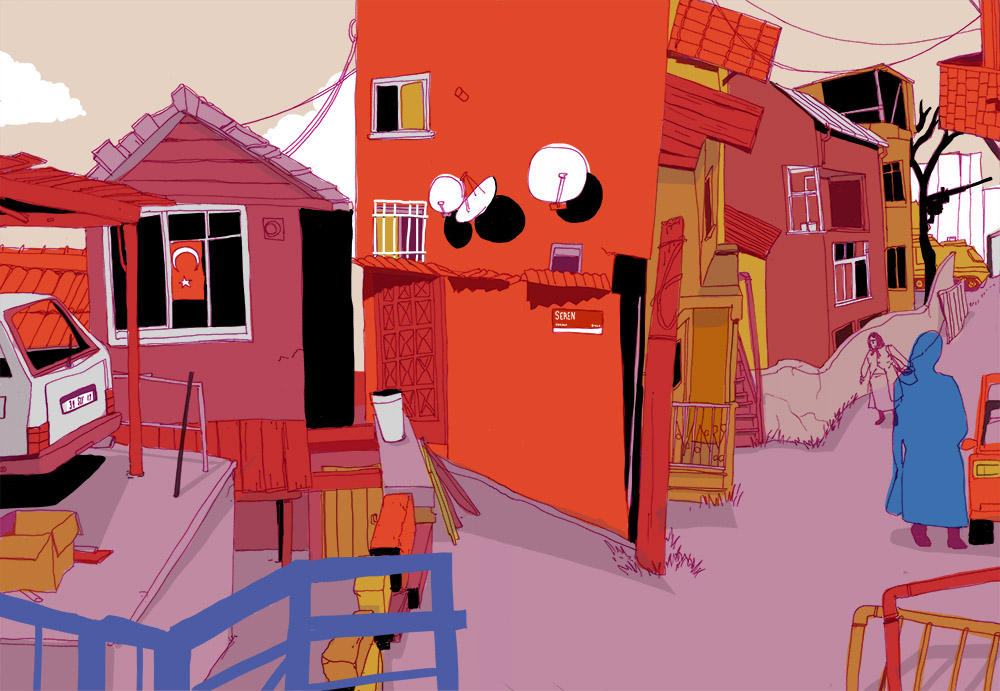
How do you make an illustration? What does the process look like?
I draw on my tablet or in my sketchbook, and then I scan it. I always use the computer for color. Paint is expensive, and I like to change my decisions every five minutes about what color I use. The computer makes that a lot easier. Over the years I have learned how to make it look like it isn’t made with the computer. Adding texture, making the linework not so clean, lets the image look hand-drawn. Without texture everything looks flat. I take pictures everywhere I go.

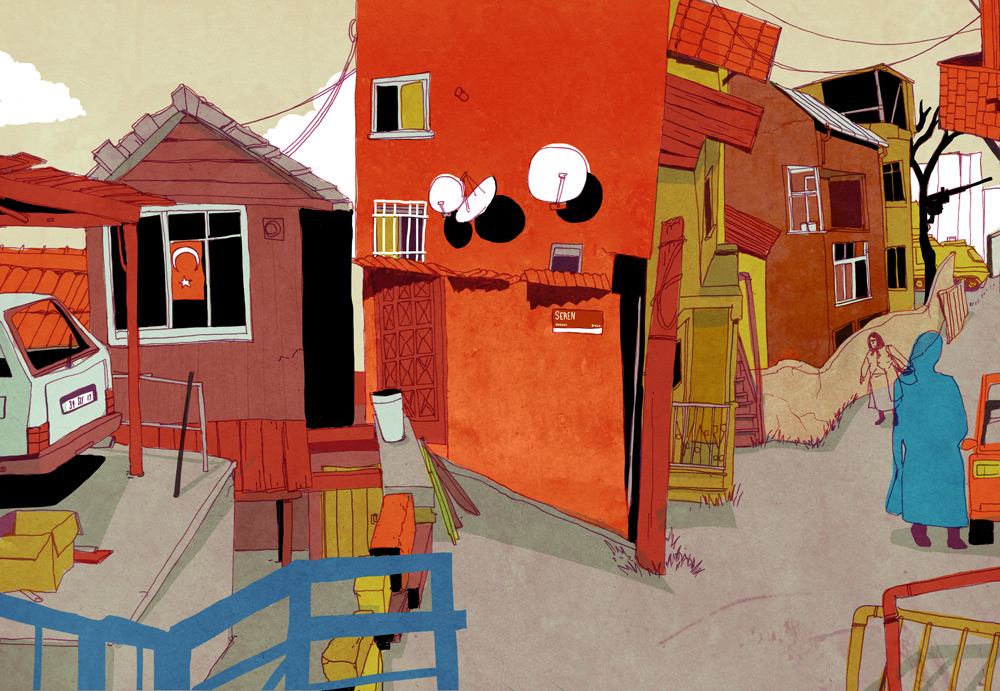
I take pictures of walls. Just grungy walls. Walls from California, India, Colombia, Thailand… and colors. I have this whole library of textures. I then overlap them on top of my drawing. So it doesn’t just look like a collage of pieces, I tint the colors to unify the palette. I make it look vibrant or subdued, based on how loud and fun and exciting the place was.
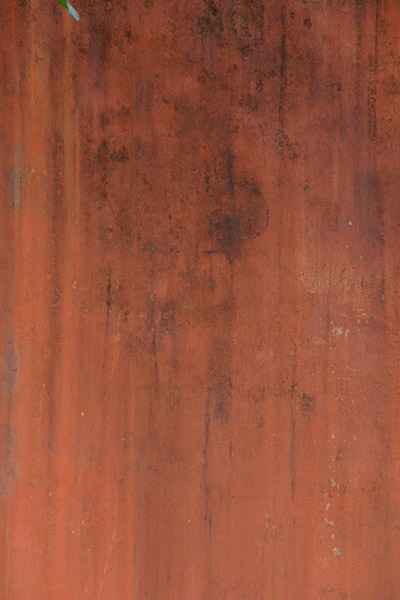
What were major breakthroughs for you as an illustrator? How has your style developed since you started drawing?
I think traveling to India was the major leap. That was where I started using texture. I was inspired by how textured the walls and surfaces were. When I got back from India everything looked like it was just bathed in milk. Everything here is just so smooth. So that was the biggest eye opener I think. Using texture. And then, yeah, when I started drawing on location more and more. One professor in particular made me stop drawing anything that wasn't on location for a month. After that month I was way better at drawing.
What were challenges or difficult moments in your career?
There were months, or stretches of months, especially when I first moved to Madison, where work really dried up. That's the hard part of being a free-lancer. It’s a roller coaster. So sometimes you'll go months without really having any major jobs, and you just have to have faith that they come back.
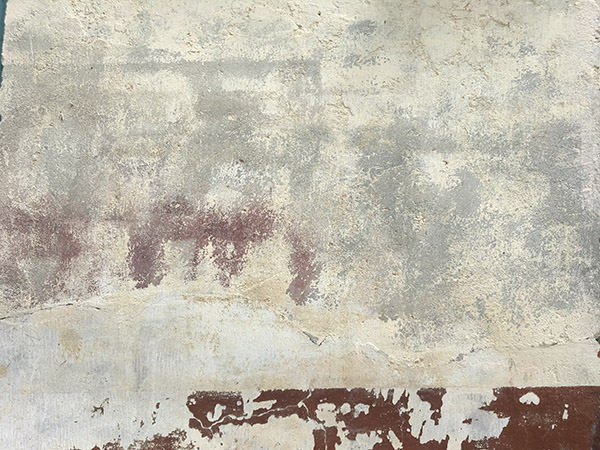

How did you get your first job?
I think I’m the luckiest illustrator in history. I got my first job right before I graduated. And to date it was one of my biggest jobs ever. It was just totally random. They found my student website, and they really liked it. I think they were just looking for a student to do it on the cheap. But then I talked to my professor and he told me how much I should ask for. That was ten times more than I would have asked for. They didn't end up getting it cheap, but I ended up being able to pay my rent for a year. By the time the money from that ran out, I had already been able to self-market and get other jobs. So, yeah, really lucky.
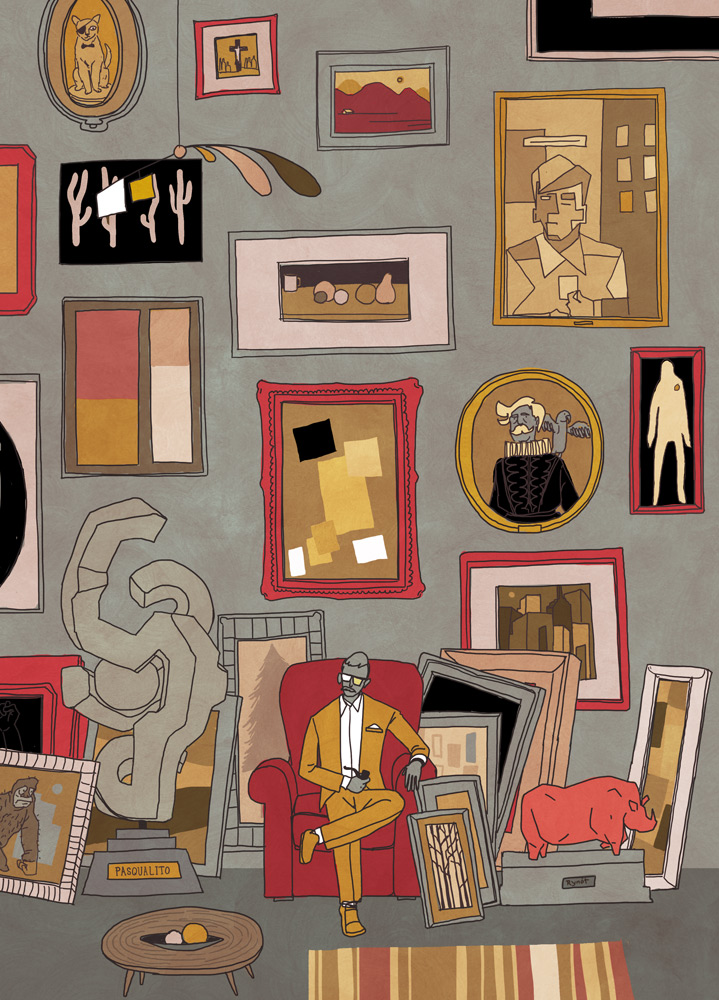
What are some of the self-marketing strategies you used as a student?
I sent out postcards – I think I have a bunch of them somewhere. I put my name, phone number and email address on them, and sent it to hundreds of people. To find the addresses I just went through Barnes and Noble. I looked for every magazine I found with illustrations, looked in their masthead, wrote down the name of the art director and the address. They have databases you can subscribe to for that information, but I didn’t know that then. I’m sure most of my postcards never got opened and are just in a landfill somewhere. The first time, I sent it to like 120 people, I think, and I got two responses. St. Louis Magazine and AARP. Today I do the same thing by email but spend less money and reach more people. And I don’t have to lick hundreds of envelopes.
What’s your advice for young artists starting a career as an illustrator?
Go for it! Even if you don't get lucky like I did. I think it’s definitely a great career path. And if you do need to supplement it with another job – mine was graphic design and web design – I would try to find something relevant. Or something that will keep you interested, and that you can gain skills with that will help your art.
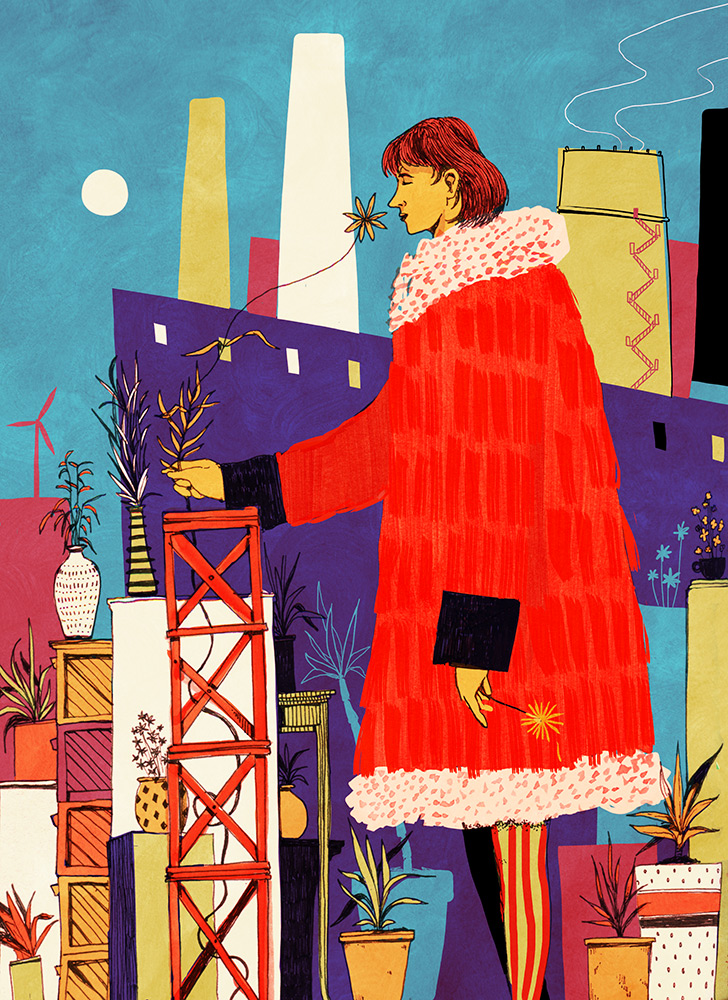
Thank you for the great conversation and sharing your work, Michael.
We invite the EAS community to comment and connect regarding this interview. How does your own work and path as an artist relate to Michael’s? What are your thoughts on some of the topics addressed? Have you had similar experiences with textures, drawing on location, or digital graphic tools? What self-marketing strategies do you use?
